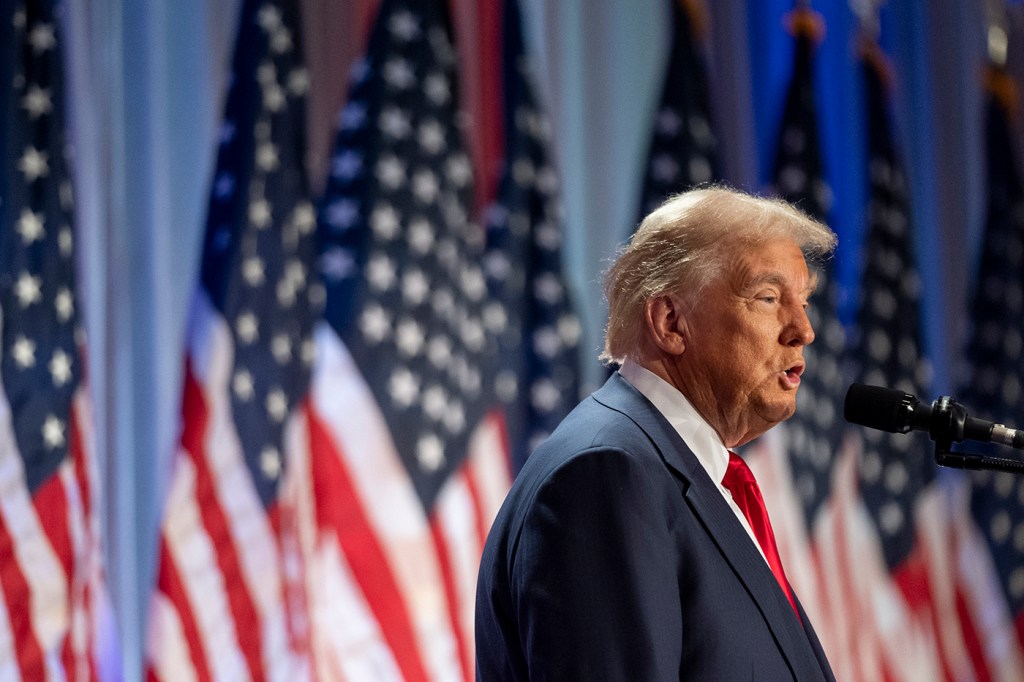What are tariffs? Economists explain the reality behind Trump’s policy – and why they think it would be ‘catastrophic’
On the campaign trail, Donald Trump announced a plan for widespread tariffs targeting all imported goods, especially those from China. Northeastern economists say, if implemented, it would have a major ripple effect.

During his presidential campaign, Donald Trump made it clear that a pillar of his economic policy would be tariffs, going so far as to say that “tariff” is the “most beautiful word in the dictionary.”
With tariffs such a key part of his presidential priorities, it’s worth exploring what they are, how they work and what kind of impact Trump’s tariff proposal could have on the economy.
“Tariff is just a fancy word for tax: It’s just a tax on anything that comes into this country from overseas,” explains Peter Simon, a teaching professor of economics at Northeastern University.
Similar to a sales tax for consumers, tariffs place additional taxes on imported goods, usually specific goods or goods from specific countries, only the tax is paid by any company that imports those goods. The money collected from tariffs ultimately ends up going to the federal government, like any kind of tax. Trump’s recent tariff proposal would involve a 60% tariff on all goods from China and a 10% to 20% tariff on all imported goods.
The rationale for tariffs is to protect domestic products and businesses, says Xiaolin Shi, an assistant teaching professor of economics at Northeastern.
“By imposing a tax on foreign products, it raises their prices, which can help U.S. companies face less competition from cheaper goods made in other countries,” Shi says.
The previous Trump administration previously placed tariffs on Chinese goods, which the Biden administration has kept in place. In fact, it’s part of a larger post-World War II shift in the U.S. away from global free trade in an attempt to respond to diminishing domestic manufacturing, Simon says.
For businesses, there are obvious benefits. Normally, to compete with cheaper products made with lower production costs abroad, U.S. companies either have to lower their prices or improve their products, Shi says. If there is less foreign competition, U.S. firms can raise their prices and improve their profits.
Editor’s Picks
If companies experience enough growth, they may even be able to hire more employees. In that case, tariffs could translate into lower unemployment rates for some industries, Shi says.
However, economists agree that inevitably consumers end up footing a large part of the bill.
“If you want to buy an imported product, you’ll likely pay a higher price,” Shi says. “And for domestic goods, since there’s less competition from cheaper foreign products, domestic companies don’t feel the same pressure to lower their prices as much.”
Higher prices for consumers leads to other downstream economic effects too, Simon adds.
“For instance, if there was a car in China that you would pay $30,000 for if you bought it from China and it’s now going to cost $60,000, that’s $30,000 … that you can’t spend somewhere else now. That means whatever businesses you would have bought from,” Simon says. “It could be possible that a tariff could save some jobs in some industries, but you’re going to lose jobs in other industries.”
The costs for businesses can quickly escalate and disrupt entire supply chains, especially if tariffs target components in other products, passing down further costs to consumers.
“If you’re looking at supply chains and you’re looking at certain components that are actually inputs into other finished products, that can be really, really bad,” says Nada Sanders, a distinguished professor of supply chain management at Northeastern. “Those [issues] can really propagate and you can start to see costs add on and add on.”
Based on the industry or product being taxed, tariffs can help incentivize local business and build domestic infrastructure in certain industries, according to Sanders, but she likens them to antibiotics: “You’re sick and you take it, but you don’t want to take it too long.” It’s better, she says, to couple tariffs with other trade policies and incentives to stimulate domestic production.
So, what happens if tariffs are adopted universally on all imported goods, as Trump has proposed?
Sanders argues the impact would be “catastrophic” for the U.S., given it imports everything from bananas and luxury goods to most of its generic drugs and even chemotherapy medication.
“It would grind things to a halt to the point where prices would skyrocket,” Sanders says.
Beyond increasing prices for consumers, Trump’s proposed tariffs could come with another added cost: trade wars.
The previous Trump administration already saw the trade implications of tariffs. After the Trump administration placed tariffs on a series of Chinese imports, China responded in kind with tariffs on imported U.S. goods, including many agricultural products. U.S. agricultural exports dropped precipitously, forcing the U.S. government to use $28 billion in taxpayer money to support farmers harmed by its own trade policies.
Simon says this is one of the biggest reasons that tariffs are a lose-lose strategy: “Nobody wins a trade war. Everybody gets hurt.”
Placing tariffs on all imported goods is an even bolder statement, one that could have serious international implications for the U.S., according to Shi.
“The downside of this kind of approach is that other countries may get even closer, creating stronger trading relationships with each other,” Shi says. “Meanwhile, the U.S. could end up facing the long-term consequences: less access to global markets, higher prices for consumers, and fewer opportunities for American businesses. In the end, this isolation could hurt the very people and industries we’re trying to protect.”












